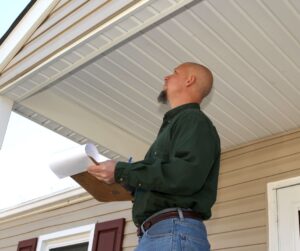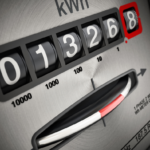No one likes it when a good deal dies. Especially when selling your home, it can be disappointing. Whether the property won’t sell due to financial complications or miscommunications, learning that a great offer has fallen through is always a setback in real estate. Unfortunately, home inspections are a well-known deal-killer within real estate. They’re also one of the more preventable obstacles. Sellers often get stressed about a person entering their home with the sole intention of identifying problem areas. If you’ve lived in your home for a long time, it might even feel like a personal attack. Luckily, with enough planning and preparation, a successful and clean home inspection can expedite your home selling experience rather than cause an unnecessary roadblock.
In this article, Love Real Estate will explore some home inspection tips for sellers looking to make their inspection go as painlessly as possible. We’ll discuss what buyers tend to look for during inspections, and how to pass a home inspection to help you sell your home seamlessly!
What Are Buyers Looking For During Home Inspections?
Preparing for a home inspection is much easier if you know what the inspector will be looking for during the appointment. Countless factors go into a home inspection. The inspector is expected to provide the buyer with a comprehensive and detailed summary of the home’s condition from top-to-bottom. Sellers that have pushed off maintenance tasks throughout the years might struggle with the inspection more than those who have consistently kept their homes in good condition. So what do buyers look for during a home inspection? Home inspections will explore both external and internal characteristics of the property.
External Inspection Factors
Regardless of what level of preparation is placed on the inside of the home, the exterior will be what provides the first impression for buyers and home inspection personnel. The curb appeal plays a huge role in how they proceed throughout the inner inspection. Here are just a few of the external factors that will affect the home inspection:
- Exterior Plumbing: Gutters, downspout attachments, drainage
- Exterior Home Appearance: Siding of the home, general quality of paneling/paint, etc.
- Home Foundation: Substantial cracking, tree roots near home, sunken ground, etc.
- Roof: Staining, dark spots, moss, mold, missing shingles or tiles, potential replacement dates
- Windows and doors: Buyers often check external locks, alignment, leaked moisture between frames and panes, ease of opening
Internal Inspection Factors
Once a prospective buyer or home inspector enters the house, the little details get involved. No room will be left untouched, so do not attempt to skirt around smaller responsibilities. Some of the internal home features that will play a role in the inspection include but are not limited to:
- Smell: Unusual scenes, pet dander/odor, mold, mildew, etc.
- Moisture: Especially in the attic and basement, inspectors will check for leaking and water intrusion.
- Basement/Attic: Finished vs. unfinished, insulation, general condition
- HVAC: What heating/cooling systems are in place, are they functional, manufacturing age, etc.
- Plumbing: Water pressure, fixtures, leakage within cabinets, water heater age
- Electrical: Light switches, outlets, grounded wiring, circuit breakers/electric paneling, outdated wiring
Home Inspection Tips for Seller Success
Now that we understand what buyers and home inspectors will be looking out for during the inspection, it’s time to explore how to properly prepare for the inspection itself. While the inspection might seem daunting, it doesn’t have to be. If you make sure the home is in the proper condition you should only look forward to the inspection’s completion. Transparency is crucial for any successful real estate transaction, and that begins with the inspection.
what buyers and home inspectors will be looking out for during the inspection, it’s time to explore how to properly prepare for the inspection itself. While the inspection might seem daunting, it doesn’t have to be. If you make sure the home is in the proper condition you should only look forward to the inspection’s completion. Transparency is crucial for any successful real estate transaction, and that begins with the inspection.
Home Inspection Tip #1: Begin By Completing a Pre-Inspection
First things first, put yourself in the buyer’s shoes. Would you want to purchase a home only to learn a few weeks or months down the line that there are major maintenance issues or aged appliances? Likely not. That’s why sellers should begin by completing their own version of a home inspection by inspecting the different features buyers generally check. Start outside, work your way in, and don’t leave any cranny untouched as you take note of property updates or repairs that need to be completed before the new owners move in. By eliminating these issues early, the pending inspection will be much less worrisome.
Home Inspection Tip #2: Make sure utilities are on
 This may seem like an obvious tip, but is especially relevant for those vacant rental properties where utility service may have been discontinued. The home inspector will be checking to see that electrical and gas components of the home are in good working condition. If utilities are NOT turned on, the home inspector won’t be able to complete these steps and likely deem the inspection itself as “incomplete”.
This may seem like an obvious tip, but is especially relevant for those vacant rental properties where utility service may have been discontinued. The home inspector will be checking to see that electrical and gas components of the home are in good working condition. If utilities are NOT turned on, the home inspector won’t be able to complete these steps and likely deem the inspection itself as “incomplete”.
Home Inspection Tip #3: Provide Access to Any Important Documents
After resolving any issues beforehand, it’s time to secure all important documentation relating to the home. Buyers and home inspection professionals will often ask the sellers to provide paperwork relating to remodeling projects, major repairs, upgrades to HVAC systems or property, etc. The more information you can provide the inspector the better, as this will lead to a more thorough report and additional peace of mind for prospective buyers.
Home Inspection Tip #4: Don’t Neglect Curb Appeal
 As we briefly touched on, curb appeal is not something a seller should ever neglect when they have a home inspection on the horizon. When buyers pull up to the property they should feel that they’re looking at their future home. That can become much more difficult if there is an unkempt yard, overgrown ferns, clutter bursting out of a garage, or obvious damage to the home’s exterior. Make sure that as you approach the home people feel welcomed rather than weary.
As we briefly touched on, curb appeal is not something a seller should ever neglect when they have a home inspection on the horizon. When buyers pull up to the property they should feel that they’re looking at their future home. That can become much more difficult if there is an unkempt yard, overgrown ferns, clutter bursting out of a garage, or obvious damage to the home’s exterior. Make sure that as you approach the home people feel welcomed rather than weary.
Home Inspection Tip #5: Declutter and Clean Thoroughly
This might go without saying but home inspectors don’t love a dirty home. Not only does mess and clutter complicate the inspection, but it can also prevent the inspector from doing their job if it prevents access to certain fixtures (i.e. a sink full of dishes prevents them from checking the sing drainage.) Make sure that the home is cleaned thoroughly and that the home inspector can move comfortably throughout all rooms of the home.
Home Inspection Tip #6: Properly Prepare the Home for an Inspection
 Outside of cleaning, there are quite a few preparations that need to be completed to make sure the home inspection goes well. Small children and pets might seem like a cute way to welcome the inspector, but should generally be taken out of the house to avoid any preventable complications occurring. You should also make sure that you have keys to any areas that are locked, such as a boiler room or electrical panel. This is also the case for any detached areas such as the garage, shed, etc. The inspector will need access to these to complete their checklist. Lastly, if you believe the inspector might find accessing these areas challenging for any reason, make sure to leave some instructions for their review.
Outside of cleaning, there are quite a few preparations that need to be completed to make sure the home inspection goes well. Small children and pets might seem like a cute way to welcome the inspector, but should generally be taken out of the house to avoid any preventable complications occurring. You should also make sure that you have keys to any areas that are locked, such as a boiler room or electrical panel. This is also the case for any detached areas such as the garage, shed, etc. The inspector will need access to these to complete their checklist. Lastly, if you believe the inspector might find accessing these areas challenging for any reason, make sure to leave some instructions for their review.
Home Inspection Tip #7: Provide the Inspector with Enough Time for the Appointment
If there’s one way to derail a home inspection quickly it’s rushing the home inspection in hopes that the inspector will miss certain items. Not only is this an unprofessional way to handle any real estate transaction, but it’s also a steadfast way to give the buyer a poor idea of the condition. By providing the inspector with an adequate amount of time to complete his checklist, you’re communicating that you have nothing to conceal and want to resolve any issues that might be noted rather than avoid them.
Home Inspection Tip #8: Remove Yourself from the Inspection Space
 It’s fairly common for the buyer to accompany the home inspector during the appointment to ask questions about the property. That can become more challenging with the seller lingering within the home. It’s highly suggested to plan your schedule around the inspection to guarantee you and your family members are outside of the house when they arrive. Whether that means running a few errands or planning a convenient trip, all pets and people should leave during the inspection for at least 2-4 hours.
It’s fairly common for the buyer to accompany the home inspector during the appointment to ask questions about the property. That can become more challenging with the seller lingering within the home. It’s highly suggested to plan your schedule around the inspection to guarantee you and your family members are outside of the house when they arrive. Whether that means running a few errands or planning a convenient trip, all pets and people should leave during the inspection for at least 2-4 hours.
Original article by CT Homes

